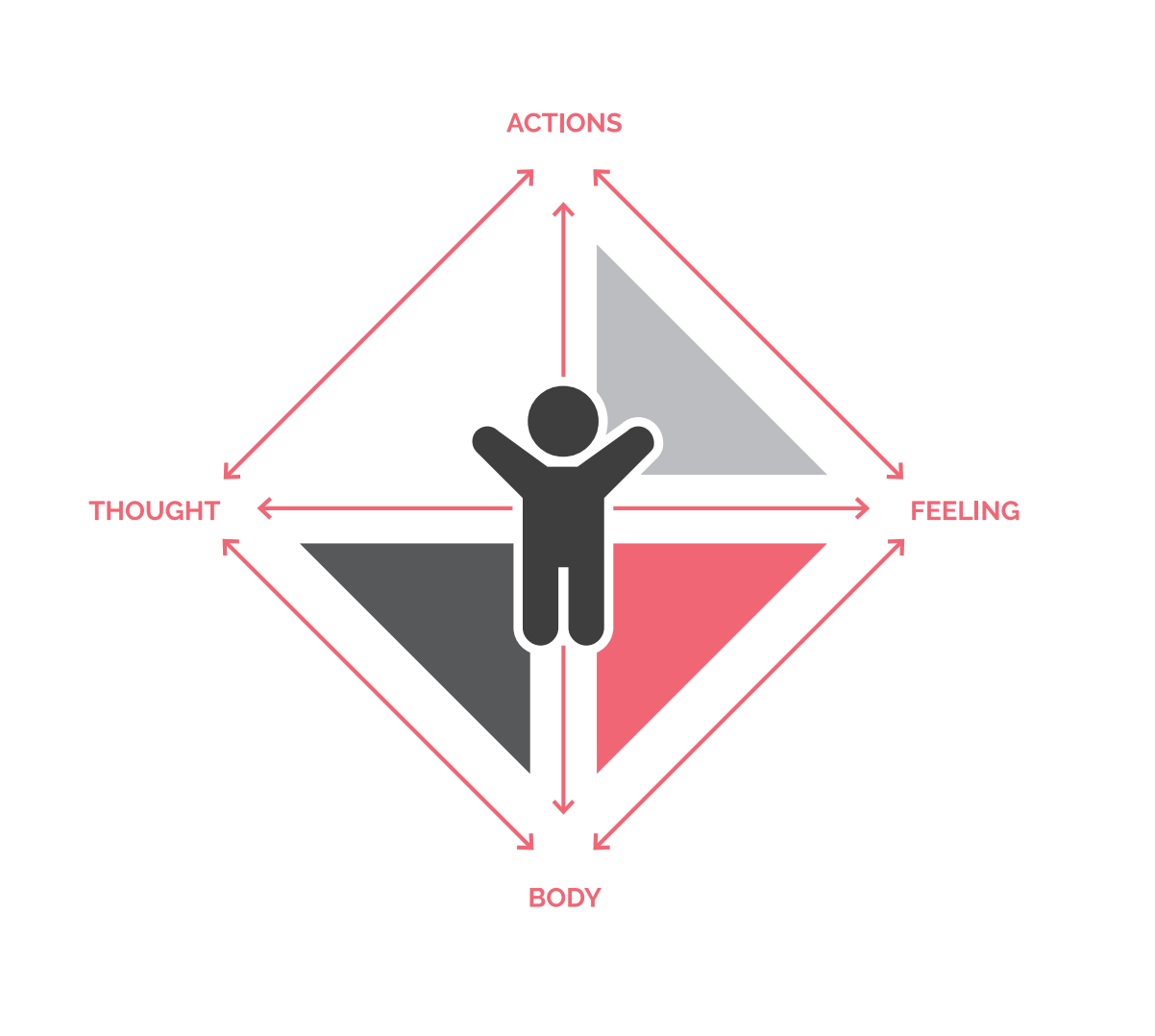A thought arises in them: ‘Why?’ They consider, that perhaps there may have been a different cause than the one they were told and whether in reality it had to do with a possible break-up. ‘Are we not friends anymore?’ ‘What did I do wrong?’ ‘Am I not good enough?’ ‘I thought we. were best friends.’ A sadness grows, and disappointment and anger fill the whole body. As a reaction, aggression, anger, ignoring and a cold shoulder is given. The body collapses, the heart beats hard and it hurts in the throat when the crying is suppressed, and distance is born. ‘I will leave him alone.’ ‘If he doesn’t want to be my friend, I don’t want to be his either.’ ‘I don’t want to come to school.’
In a situation like this, a thought arises, which becomes a feeling that affects the body and finally leads to action. Based on the cognitive diamond, students need to think about how they react in different situations.
In working with the students, the teacher should create and hand out worksheets with the title ‘What Challenges’. Here, students are asked to describe briefly three different situations where they have tried not to be sad, scared, insecure, or angry, and where they did not know what to do. This may be because they were afraid of being hurt or rejected. It may be from the experiences they have had with friends, teachers, family or others.
If there are students who cannot think of any challenging situations, they may recognise some of the following situations:
- If your friend suddenly does not want to talk to you.
- If your parents or teachers get angry or disappointed with something you have done.
- If you experience being kept outside by some friends that you usually talk to during recess.
- If you are sad and do not dare to say it out loud.
- If you get outraged.
- If your parents decide to divorce.
- If you have sent a personal text message to a friend/classmate and have not received a reply.
- If someone has written negatively about you on social media.
- If you are nervous that someone in the class is gossiping about you.
- A party where you were not invited.
- If your boyfriend/girlfriend talks a lot with another boy/girl from the class.
Next, illustrate the processes; thought, feeling, body, and action (without necessarily calling it the cognitive diamond). Let those of them who want to, tell stories from their lives in which they have experienced something challenging and see if they have grasped the meaning. They will have to analyse their behaviour themselves, with support from the teacher.
Say: Where in the cognitive diamond should this be? So, you felt sad, right? Do you remember, what you were thinking about and what happened? Oh, so you were afraid that you were no longer friends. That makes sense. Now we have a thought and a feeling. How did your body feel, can you remember that? Heavy! That is understandable. Did you do anything? Okay, so you walked alone in the schoolyard and playing alone. Thank you so much for sharing your story.
Students will subsequently learn how it can help the teacher understand each student better and how the students can understand their own reactions and those of their classmates more thoroughly, and thus express empathy towards each other and themselves.
WHAT TO OBSERVE
Even though the first part is a written exercise, it will most often leave the student calm and energised. When the teacher allows difficult situations and hurt feelings to be typically talked about, an atmosphere of inclusion, warmth, care, and inclusiveness is established. It gives students space to be themselves.
QUESTIONS FOR CONSIDERATION
- Did you gain new perspectives, as a result of newly acquired background knowledge of the cognitive diamond?
- How can you use ‘The cognitive diamond’ actively in situations in which your students find themselves in future?
NOTE TO TEACHERS / TRAINERS
Pay attention to any students who feel uncomfortable or have difficulties in writing about what hurts. Maybe they need a little more of your attention after the class is over.
This exercise can be used on all ages and modified to be less academic for the lower age groups.
